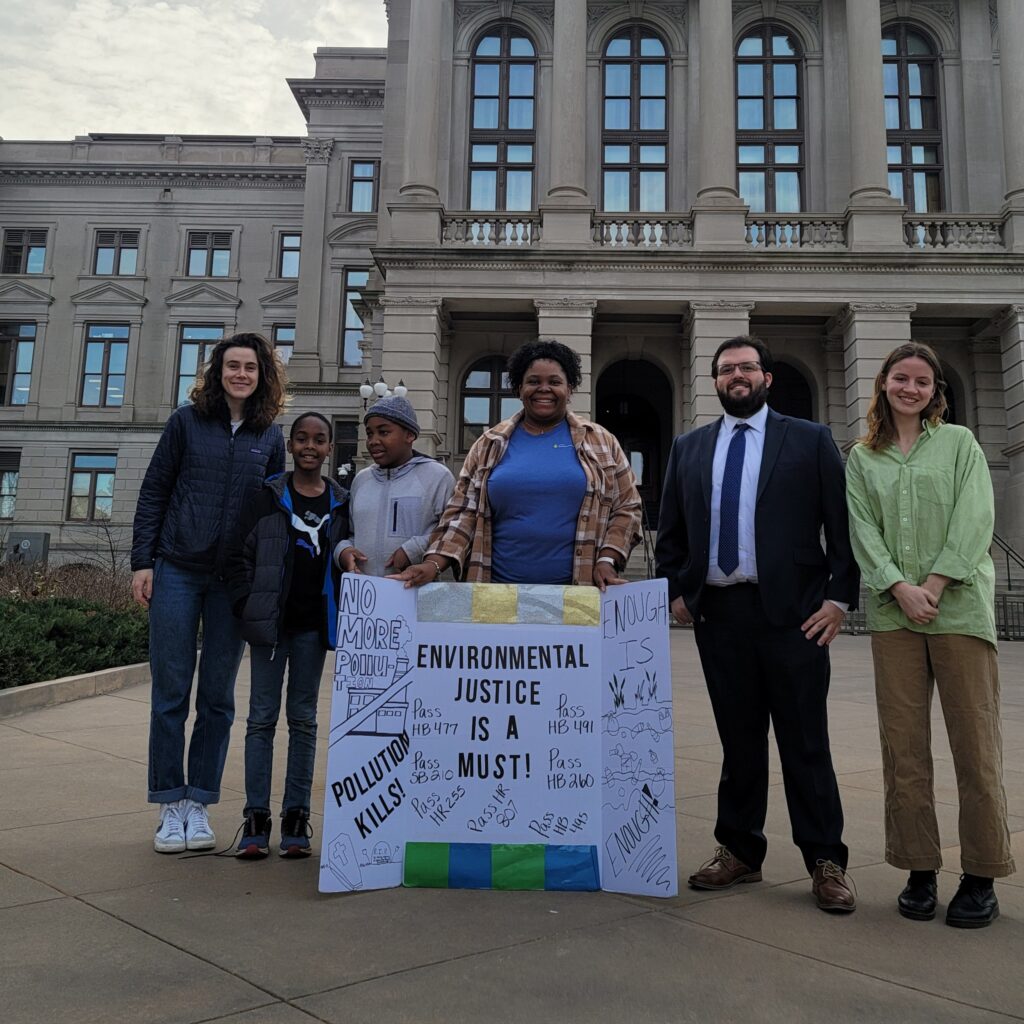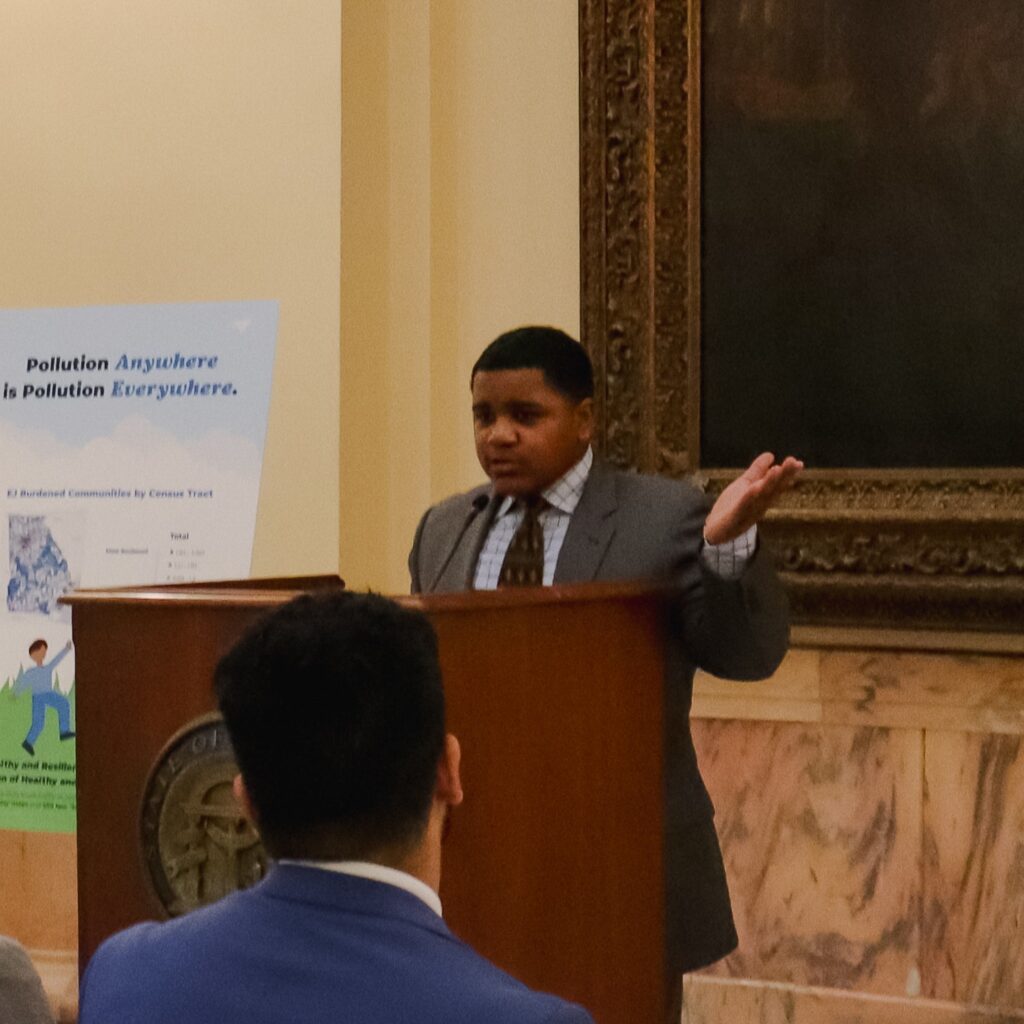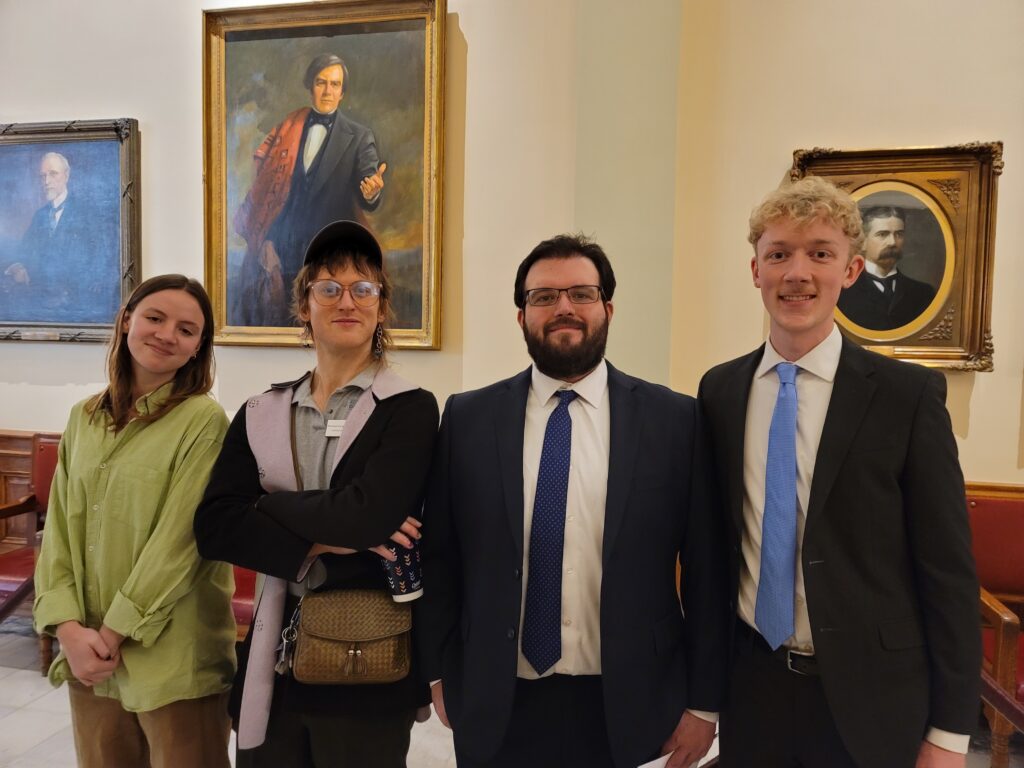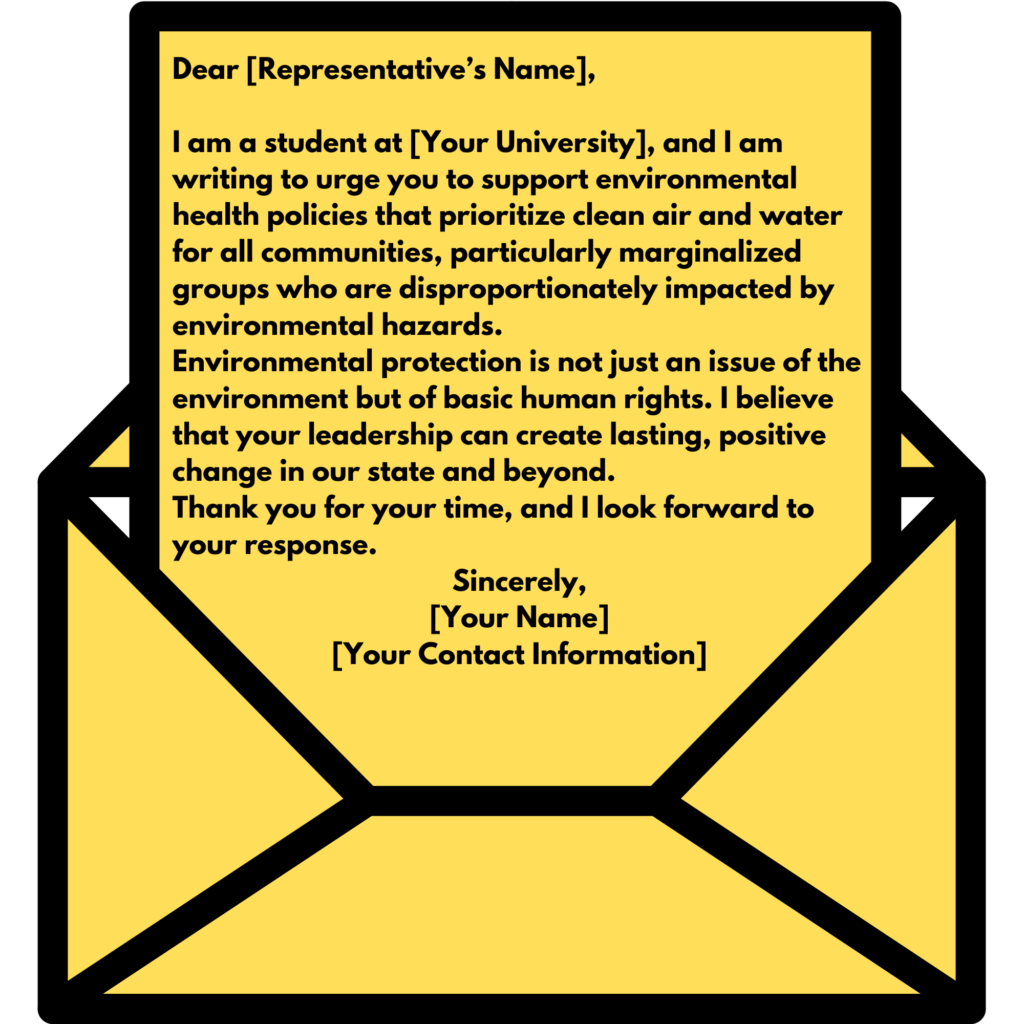This Student Toolkit was developed by students, for students, and is a comprehensive resource designed to empower students to advocate for Environmental Health and Protection policies, engage in advocacy on their campuses, and raise awareness about the disproportionate environmental harms faced by marginalized communities. This toolkit provides guidance on effective advocacy strategies, social media campaigns, organizing events, and practical steps students can take to get involved.
The problems posed by environmental injustices are not far removed from the daily lives of students. From the air we breathe to the water we drink, environmental hazards can affect anyone, but historically marginalized communities often bear the heaviest burdens. Students can play a crucial role in bringing awareness to these issues and mobilizing their peers to take action.
The power of student activism: Across history, student movements have driven significant social and political changes. From civil rights to climate action, students have been at the forefront of advocacy. Your voice and actions matter. Advocating for environmental policy and protection is another platform where student energy and passion can make a difference.



Introduction to Environmental Protection
What is Enviornmental Policy & Protection? The fair treatment and meaningful involvement of all people—regardless of race, color, national origin, or income—with respect to the development, implementation, and enforcement of environmental laws, regulations, and policies. The aim is to ensure that no group of people, particularly marginalized and vulnerable populations, bears a disproportionate share of the negative environmental consequences resulting from industrial, governmental, and commercial operations or policies.
Impact of EJ on Students. Environmental justice is not just a policy issue—it’s a matter of human rights. It impacts public health, access to clean air and water, food security, and more. As students, you are in a unique position to advocate for EJ because you represent the next generation of leaders who can demand systemic change. Through collective action, students have the power to bring real-world solutions to these critical problems.
Example: Close to home in Georgia, in the fall of 2024, we recently had the BioLabs fire and hurricanes Helene and Milton. All of these disasters disproportionately affected historically underrepresented groups. Read more about Enviornmental Health & Justice Issues here.
Our friends in Adel, GA collectively organized to form concerned Citizens of Cook County to fight a Biomass Plant. Lean all about them here to get inspired about advocating for your community.
Advocacy 101
Step-by-Step Guide to Engaging Your Legislators
1. Find your legislators:
Use online tools like Find Your Legislator to locate the contact information for your local representatives. Write down the contact details of your state legislators and your Congressional representatives.
2. Write a compelling letter or email:
Craft a personalized message that explains why you care and how the issues are impacting your community or campus. You can follow this template:

Learn more with this Sci4Ga contact guide.
3. Call your representatives:
Use the same talking points from your email and practice calling your representatives. Be concise but clear in explaining why environmental justice is important to you.
4. Follow up:
If you don’t receive a response, follow up within a week to ensure your message was received and that you remain engaged with your representatives.
Organize Your Fellow Students
Sending an email or a letter is an awesome way to engage. But if you want to do something more, you can organize your fellow students.
Outreach Methods
Social Media
Social media is a powerful tool for raising awareness and mobilizing others. Use the following examples to create effective posts and connect with others online. Social media can be used to both raise awareness and to call people to action. If possible, be sure to include a call to action such as “write your legislator today” or “learn more here” and a link to more information.:
Sample Social Media Posts
Instagram Post Example:
📢 Clean Air for All! 🌍 Did you know that low-income communities and communities of color often face the worst air quality in the nation? Let’s raise our voices to demand clean air for everyone! #GCEPP #CleanAirForAll
Twitter Post Example:
Water is a human right. 🌊 Let’s fight for clean, safe water for all communities! #WaterJustice #GCEPP
Facebook Post Example:
Students have the power to drive change! Join us in advocating for Environmental Justice and help protect vulnerable communities from environmental harm. Sign our petition or join our next virtual coffee talk! 🌱💧 #SpeakUpForScience #GCEPP
Make a Flyer
Use Canva or another design tool to create the flyers such as the ones below:
Flyer 1: Clean Air for All
- Headline: “Breathe Easy: Fight for Clean Air”
- Key Points:
- Air pollution disproportionately affects low-income communities and people of color.
- The Clean Air Act is a critical tool in the fight against pollution.
- What can you do? Contact your legislators and demand stronger air quality protections.
Flyer 2: Water Justice Now
- Headline: “Water is Life: Protect Our Right to Clean Water”
- Key Points:
- The Flint Water Crisis is a stark reminder that clean water isn’t guaranteed.
- Learn how to test your local water quality and what actions you can take to demand change.
- Get involved: Attend the next community meeting on water quality issues in your area.
Flyer 3: Urban EJ Issues
- Headline: “Our Cities, Our Future: Urban Environmental Justice”
- Key Points:
- Urban areas are often the hardest hit by environmental hazards, including industrial waste and air pollution.
- Low-income neighborhoods in cities often have the least access to green spaces.
- Solutions include promoting green infrastructure and community gardens.
Utilize this QR code to link people to our site:

Host a Coffee Talk
Suggested Themes for Virtual Coffee Talks
1. Clean Air for All
- Overview: This session will focus on air pollution, how it impacts marginalized communities, and what students can do to advocate for cleaner air.
- Discussion Topics:
- How does air quality affect students and the surrounding community?
- What are the current air quality regulations and where can they be improved?
- What steps can students take to support clean air initiatives?
2. Water Justice Now
- Overview: This talk will center on access to clean water and the ongoing fight for water justice in communities across the U.S.
- Discussion Topics:
- What are the major water quality issues affecting our communities today?
- How can students test their own water supply?
- What role can students play in the fight for water justice?
3. Urban Environmental Justice
- Overview: This session will focus on EJ issues in urban areas, such as waste management, pollution, and access to green spaces.
- Discussion Topics:
- What are the specific environmental challenges facing urban communities?
- How can students advocate for cleaner, greener urban environments?
- What urban EJ initiatives can students get involved in locally?
Contact Us
Questions? Comments? Concerns? Contact us using this form!